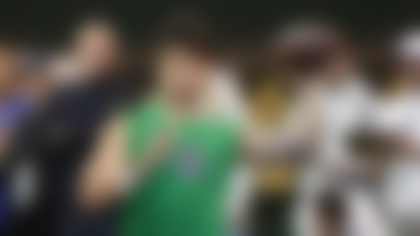The Associated Press
The National Institutes of Health, with partial funding by the NFL, has chosen eight projects to receive support in researching concussions.
Two $6 million grants will be given to a cooperative partnership focused on long-term changes in the brain years after a head injury or after multiple concussions. The partnership includes the National Institute of Neurological Disorders and Stroke (NINDS); the Eunice Kennedy Shriver National Institute of Child Health and Human Development (NICHD); and multiple academic medical centers.
The NIH also will provide just over $2 million for startups of sports-releated concussion projects. If the early results are encouraging, they may become the basis of more comprehensive projects.
The NIH institutes responsible for managing these grants are NINDS, NICHD, and the National Institute on Deafness and Other Communication Disorders (NIDCD).
"We need to be able to predict which patterns of injury are rapidly reversible and which are not," Story Landis, director of NINDS, said in a statement. "This program will help researchers get closer to answering some of the important questions about concussion for our youth who play sports and their parents."
Funding is provided by the Sports and Health Research Program, a partnership among the NIH, the NFL and the Foundation for the National Institutes of Health (FNIH). In 2012, the NFL donated $30 million to FNIH for research studies on injuries affecting athletes, with brain trauma being the primary area of focus. The NFL did not have a role in which organizations received the grants. Those decisions were made by the NIH.
"We are optimistic that these research projects will help advance the understanding of the complex issues involving traumatic brain injury," said Jeff Miller, the NFL senior vice president of health and safety policy.
The cooperative awards bring together two teams of independent scientists to study and compare the brains of donors who were at high or low risk for developing long-term effects of traumatic brain injury. Ten neuropathologists from eight universities will meet to develop standards for diagnosis.
Four teams will correlate brain scans with changes in brain tissue, which could lead to using such advanced brain imaging techniques to diagnose chronic effects of traumatic brain injury in people who are still alive.
The NIH also will develop a registry for enrolling individuals with a history of such brain injuries who are interested in donating brain and spinal cord tissue for study after their death.
Information from the National Institutes of Health contributed to this report.



